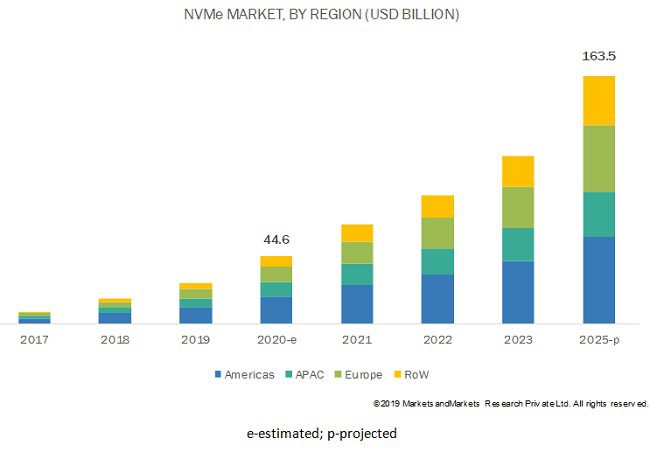Nobody can deny that the COVID-19 pandemic caused lasting effects on the global economy in 2020, and very few places felt the change more than the tech industry. “Stability” and “keeping business going” were the key mottos of the last year, especially when realigning IT spending during the pandemic. With a shift to a global remote workforce, more enterprises opted against full tech refreshes with next-generation servers and data centers and invested in new client workstations while enhancing existing data centers (more DRAM and SSDs) and cloud-based services.
Analysts at Gartner Research and elsewhere were correct that overall spending was down through the end of 2020, but there is also a tremendous opportunity for 2021 because many investments weren’t canceled, only delayed. The broader IT spending in 2021 looks to recover losses from 2020, with an estimated $2.38 trillion in global spending. Of that, the largest gains will be in new data center and edge computing server investments, further enhancing the capabilities and performance of SaaS and PaaS providers and supporting the global remote workforce.
Here’s another research study on the NVMe market, showing a huge expected upside.
With the data center systems receiving the largest portion of investments of the overall IT spending predictions, what tech trends do we expect within the enterprise server market? The biggest change may be with the investment into NVMe (non-volatile storage media express).
New NVMe investments are on the way
Intel has announced it will be shipping its new Ice Lake SP servers in 2021, making the newest generation of processors and servers from both AMD and Intel PCIE 4.0-compatible. This provides an opportunity for vast improvement in data transfer speeds (2GB/s per lane, up to 64GB/s), and additional NVMe innovations like density, R/W intensity and general endurance.
Because it’s also backward-compatible with PCIE 3.0 connections, existing purchases of NVMe drives will be immediately compatible but will not gain the immediate performance benefits. This makes upgrading much easier for future tech refreshes that seek to do incremental evolutions.
RAID methods are going to change
In theory, implementing NVMe unlocks the storage device from the hardware controller, and gives you the performance far and above what you could get with SATA (serial ATA) and SAS (serial attached SCSI). But implementation opens a whole new can of worms when architectures have been reliant on hardware-based RAID (redundant array of inexpensive disks) controllers and redundancy practices, and form-factors may not support a multi-NVMe backplane.
When the organization switches to NVMe, it will have to explore how they are going to still meet their high-availability practices once they move to a software-based platform. This will create new software-defined storage schemes to dynamically scale and shift based upon demand, availability and read/write operations.
NVMe form factor is shifting, but U.2 will reign
It’s become clear that serviceability and hot-swap are key factors in choosing SSDs, and NVMe has provided a challenge in the past. The U.2 form factor, with similar dimensions and serviceability to 2.5-inch SATA, is an easy and logical way to move to NVMe SSDs without a major redesign of current server chassis, and only requires an updated backplane.
As more manufacturers are embracing new NVMe form factors, including U.2, M.2, ruler and others; they will require manufacturers to develop new chassis or backplanes to make servers more serviceable.
Thus far, the U.2 form factors will provide a great bridge to newer designs, like the high-density ruler.
Endurance and predictable performance win over speeds and feeds
While a vast majority of manufacturers today will highlight the peak IOPS and lowest latency figures on their data sheets, more data center managers are relying not on peak performance but consistency. Overall, peak figures provide an assumptive performance value, but with full utilization and load, they rarely consistently meet those figures. Thus, more data center managers want performance that is reliable and consistently high, in order to get more predictability and dependability in their investment.
The remainder of 2021 should be a boon year for NVME products, especially on the client side. NVME will be the future of storage; however, it’s still going to take a while for all of the pieces to fall into place for most data center managers before they can completely migrate from SATA and SAS solutions.
